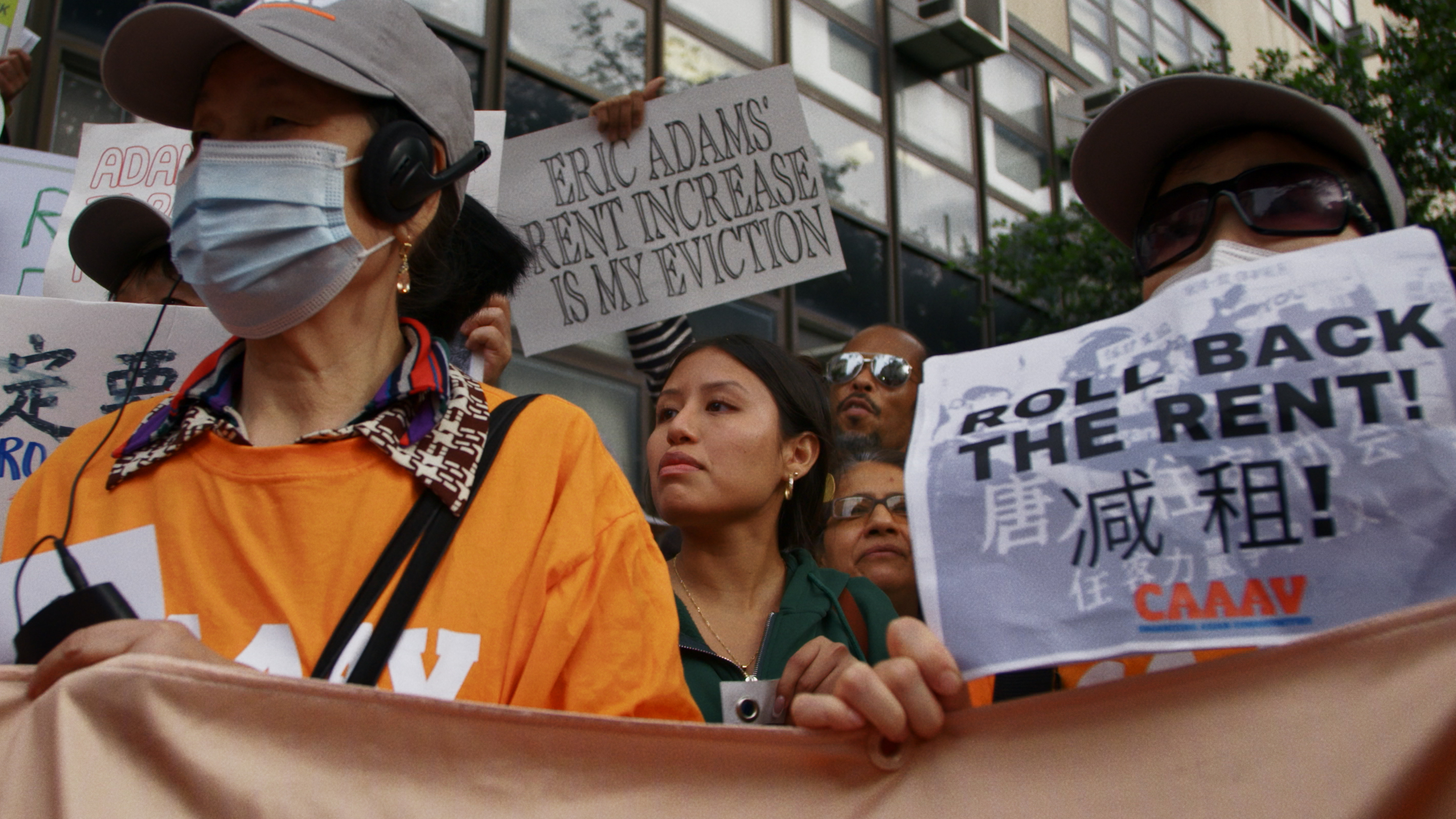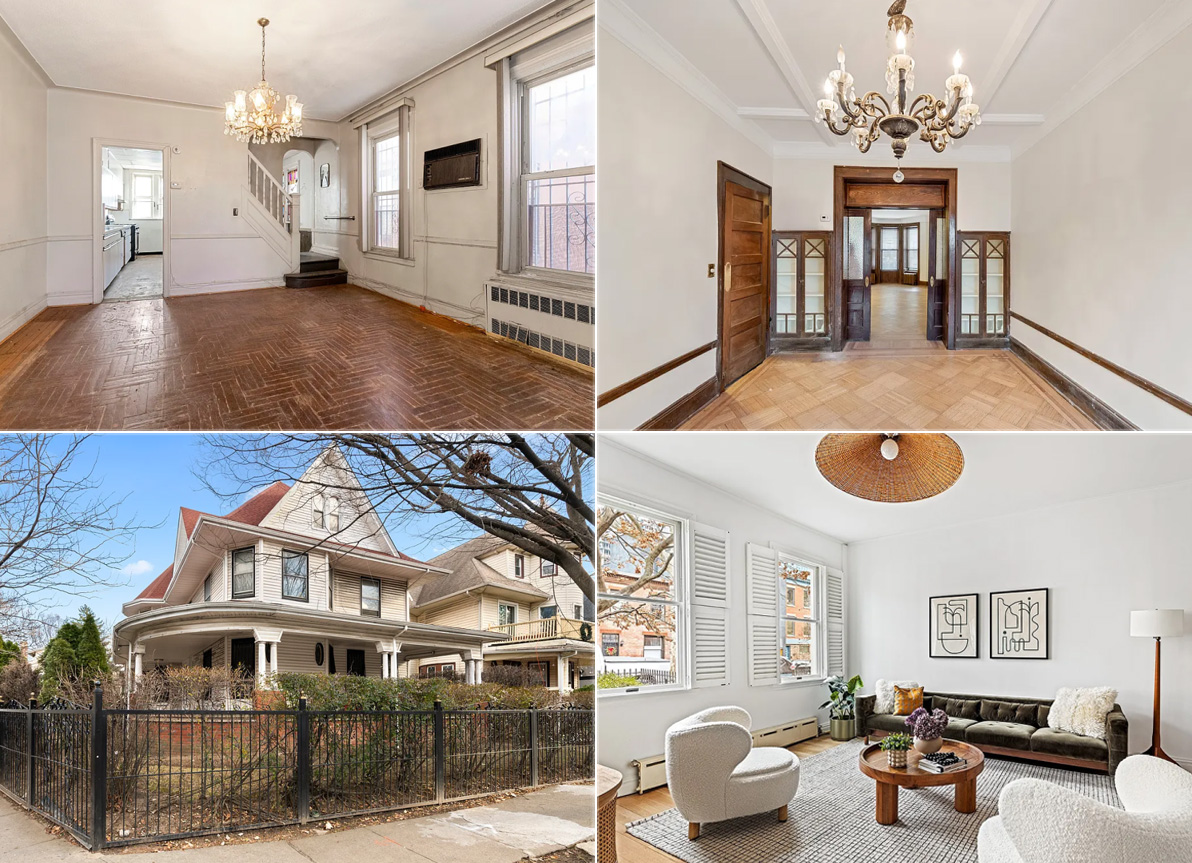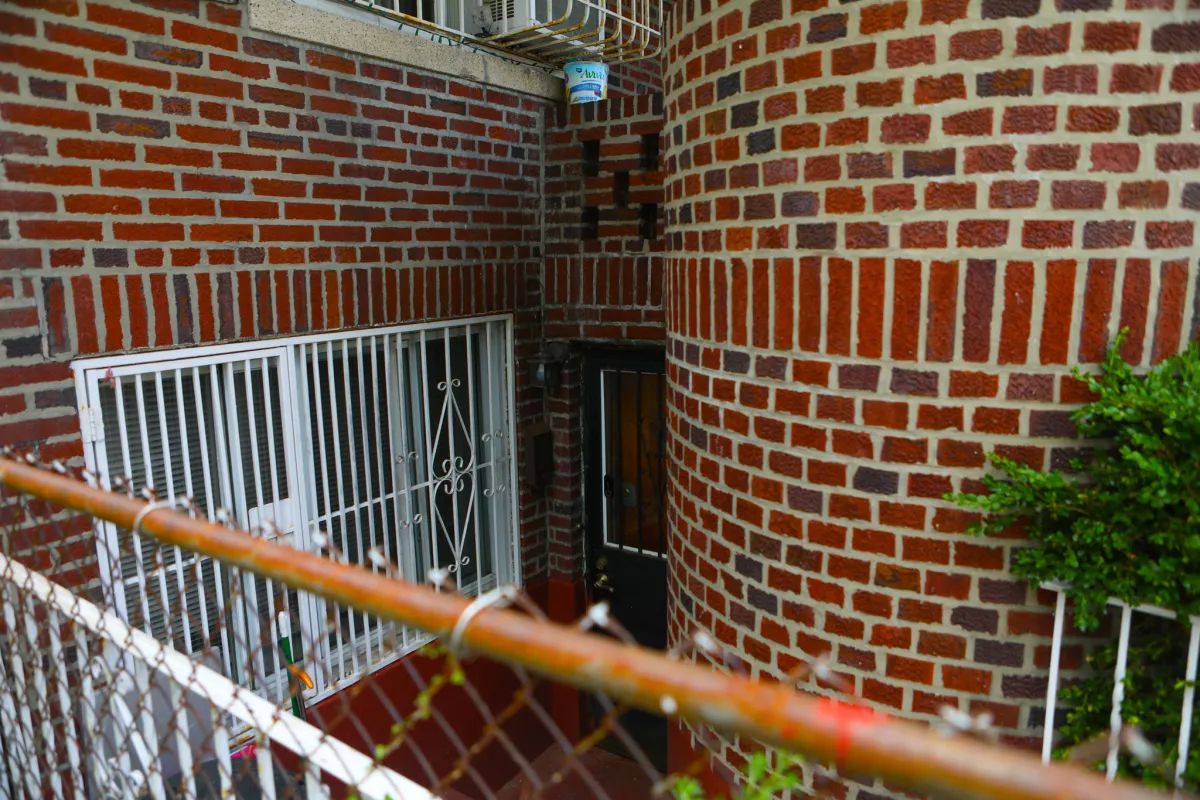Piece of Historic Wallabout Threatened by Developers
The group of four large commercial properties that take up the entire western side of Hall Street (at left in the bottom photo) between Flushing and Park Avenues in Wallabout—two of which (30 Hall and 12 Hall, pictured at top) are of architectural and historic significance—quietly changed hands last December for $10 million. The new…




The group of four large commercial properties that take up the entire western side of Hall Street (at left in the bottom photo) between Flushing and Park Avenues in Wallabout—two of which (30 Hall and 12 Hall, pictured at top) are of architectural and historic significance—quietly changed hands last December for $10 million. The new buyers, the team behind HK Management that includes Harry Kotowitz, Howie Klaus and Jeffrey Sitt, have been taking pains to keep a low profile as they seek the city’s complicity in their plot to destroy a piece of Wallabout history.
Architectural historian and Columbia prof Andrew Dolkart discussed the buildings in his 2005 survey of the Wallabout area:
The buildings that survive on the west side of Hall Street were erected by two wholesale grocery businesses. E. Le Grand Beers, who also erected buildings on the east side of Washington Avenue, commissioned the large, seven-story, brick (later stuccoed over), cold storage warehouse at 30-38 Hall Street from George Chappell in 1898. This building was extended to the north (Nos. 24-28) in 1918. Charles Hutwelker commissioned two cold storage buildings to the north, both designed by C. E. Huntley & Co. Hutwelker was a meat packer who went into business in Brooklyn in 1884. The Hall Street warehouses were initially occupied by the Charles Hutwelker Beef Export Company. No. 14-16 was designed in 1909 and No. 18-22 in 1919. These buildings could be included within a Wallabout Industrial Historic District.
As some of you may be aware, earlier in the 20th century, the city’s biggest open market used to be held across Flushing Avenue from these buildings in what’s now the Navy Yard; as a result, the large buildings in the immediate area were home to many of the city’s biggest grocery companies. In addition, as was pointed out to us by one of the preservationists working on the Wallabout Historic District application, the large awning (photo on the jump) that runs along the entire front of 55 Washington and 30 Hall, is also significant. These two buildings also sit directly across the street from the complex of reinforced-concrete buildings built for the Mergenthaler Linotype company in the earlt part of the 20th century. According to Dolkart, “The entire complex should be designated as a New York City landmark as soon as possible in order to preserve the original features of this architecturally and historically significant complex.”
The ability of these buildings to be included in the Wallabout Historic District (which is still pushing to get in front of LPC) is now threatened by the recent assumption of ownership by HK Management, whose recent track record includes snubbing Dumbo preservationists and pulling the rug out from underneath buyers at 99 Gold Street. HK has already been taking the temperature of local politicians to see if they’d support an application to the BSA to tear down all the buildings to build new residential. What’s interesting is that the four properties (2, 12, 30 and 40 Hall Street) are already overbuilt: Collectively they have about 200,000 square feet of interior space on about 70,000 square feet of lot space, well in excess of the 2 FAR for the area.
If the city does ultimately consider granting a variance for residential in this case, we sincerely hope it will look to the current Domino Sugar Factory situation as a model and insist on the preservation and integration of the buildings at 12 and 30 Hall into any kind of a proposal by the developers. If you have any strong feelings about the future of these buildings or what kind of neighbors these developers are likely to make, we’d encourage you to drop an email to Council Member Letitia James at james@council.nyc.ny.us. Maybe the spectre of this destruction will be enough to get Tierney et al to focus a little harder on designating the Wallabout Historic District. We do hear that Tierney’s planning a tour of the area at some point this summer.
Wallabout Cultural Resource Survey [Myrtle Avenue] GMAP P*Shark DOB





I grew up in Clinton Hill and Bed-Stuy Bedford Wives, albeit not in the beautiful section of the community that you are going to work on landmarking. What you are doing is so needed and do necessary & even though I am now very far from BK I wish you the very best luck. I speak about BK/CH/BS w/ my family all of the time and because I read this blog I know more about their neighborhoods than they do. WEB DuBois actually lived in the “not nice” section of BS at some point. There are so many artists and intellectuals who have called the neighborhood home. You are going to find such a rich history. Again, Good Luck & don’t forget to involve the churches–they are often the true repositories of (documented) neigborhood history and if you can get a pastor on board–well, your voulunteer issue is, at least partially, settled.
Thanks Brower Park. I’m excited and at the same time very scared and intimidated. But the way I see it, we can talk about preservation in Bedford-Stuyvesant until we are blue in the face but until someone takes the initiative nothing will get done. I’m inspired by CHN, Wallabout and Midwood. I’m going to put everything I have into this and I’m hoping for the best. Perhaps in 4 years Bedford-Stuyvesant will have two large historic district worthy of it’s immense contribution to Brooklyn’s rich architectural heritage.
I hope my husband doesn’t blow a gasket over the next four years. He supports me but is weary of the commitment and personal sacrifice. Oh well, here’s to faith…. 🙂
Bedford Wives, I am on the board of CHNA, and we will help you in any way that we can. We don’t meet until next fall, so please contact us via email at your convenience. Our contacts are listed on our website: http://www.crownheightsnorth.org. If you email Denise, specifically, I will let her know who you are (please identify as The Bedford Wives somewhere in your letter). She reads Brownstoner, but not as much as I do, so she may miss this, otherwise. She’ll pass your contact info to me, and I’ll be in touch. Sorry for the cloak and dagger, but I don’t want to leave my email address here. Good luck, this will all be worth it!
Two points.
1. A poster wrote:
“I thought that the LPC took on the initiative and unilaterally decided to landmark most of brownstone Brooklyn in the ’60s, ’70s and early ’80s and only recently has moved the entire burden onto individual communities and have required so much work.”
It’s almost NEVER been that simple. The designation of most brownstone Brooklyn HDs has been a struggle since, at least, the’70s. We in PLG had a relatively easy time, because LPC had a grant to identify potential HDs in Flatbush, but it STILL took three years of work. We (the PLGNA committee working on landmarking) still considered ourselves lucky, since we were aware of the long struggle of those working on the Ft. Greene designation, completed shortly before we started. The description of the process given by “Brower Park” is, unfortunately, typical–would that it were otherwise.
2. A couple of people have objected to the Sunnyside Queens designation. This is Sunnyside GARDENS, an unusual planned garden community which is certainly worthy of designation irrespective of the fact that the individual buildings (IMO) lack the beauty of many yet undesignated Brooklyn districts.
Of course. Keep us posted and we’ll be more than happy to help coordinate and get the word out.
Good luck!
“Comments made by Andrew S. Dolkart, James Marston Fitch Professor of Historic Preservation, Columbia University
December 5, 2006, Brooklyn, NY — We are all here today to protect Brooklyn’s most valuable asset – what makes it unique among American urban communities – it’s extraordinary rowhouse residential neighborhoods. For reasons influenced by its singular urban history, Brooklyn retains the largest concentration of 19th and early 20th century urban residential architecture in America.
These are cohesive neighborhoods of low-scale buildings where the skyline is generally pierced only by church steeples, school gables, or decorative iron cresting. Nearby are Fort Greene, Clinton Hill, Boerum Hill, Prospect Heights, Bedford Stuyvesant, Crown Heights. Some of these neighborhoods are historic districts, some are not yet designated, but all have extraordinary urban architecture.
People of remarkably diverse backgrounds choose to live in Brooklyn because of its scale and sense of neighborhood intimacy. Brooklynites always tell you what neighborhood they live in.”
Out of all the neighborhoods cited by Professor Dolkart, only Bedford-Stuyvesant is not designated as a historic district. Considering Bed-Stuy’s significant contribution to the “city’s historic, aesthetic, and cultural heritage” this must indeed change. I’m very inspired by the efforts of the Crown Heights Association.
As a result, I’m going to assist area residents in Bedford-Stuyvesant in creating a not-for-profit organization to deal precisely with the issue of historic preservation in the community. The firs step will be to create an entity, e.g., “The Bedford-Stuyvesant Historic Preservation Society”. The second is to solicit members to assist in the creation of by-laws and a mission statement for the group. The third is to create a 501(c)(3) organization. The fourth is to reach out to Deborah Young and Denise Brown at the CHNA and other preservation groups in Brooklyn for some much needed guidance on this process. The fifth step would be to have a consultation meeting with Professor Dolkart and then the LPC to determine the best course of action for the expansion of the “Stuyvesant Heights Historic District” and the creation of the “Bedford Heights (or Corners) Historic District.” The sixth step is to get a copy of the LPC survey for Bedford-Stuyvesant.
Man, this is tough and I don’t know where to begin. I need to create an email account, reserve a web domain name, and reach out to some bed-stuy blogs for assistance in getting the word out and soliciting nieghborhood support. An exploratory meeting has to be set up to see where we stand in terms of volunteers and to evaluate our resources and respective areas of knowledge and expertise. I must admit that I’m totally clueless on the preservation process with the LPC but I’m game and ready to learn. Brower Park, I will attend the next CHNA meeting and reach out to you. Perhaps there you can introduce me to Deborah and Denise. Getting a website up will be key as it’s the best way to get information out and keep the pubic informed.
Wish us luck.
Brownstoner, as soon as we are able to get something set up and running, I will let you know. Perhaps you can write a piece on the BSHPS!!
No. Mr Anonymous is seeing conspiracies all over the place. That is patently untrue. The area of Crown Heights North that was in the original designation, which includes Phases 1-4, streched roughly from Atlantic Ave to Eastern Parkway, Rogers/Bedford to Albany. Of all of that territory, only a very small portion of one corner includes what is a part of the Lubabavitch community, and that is part of Eastern Parkway, near Albany, and a couple of groups of houses nearby. 90% of the Jewish community is on the other side of Eastern Parkway going towards Empire Bvd, or what is known as Crown Heights South. Crown Heights North is 80% Caribbean and African American. For the uninitiated, Crown Heights is a very large community, which streches all the way to East New York to Prospect Heights to PLG to Bed Stuy. The historic district, even in all phases, takes up about a quarter of the community.
We petitioned for this area to be landmarked because, like Stuyvesant Heights, and Bedford Corners, the largest concentration of important architecture lies in this area. That’s certainly not to say that other parts of CH don’t have great architecture, they do, and there are some amazing blocks like President St. in CH South, as well as some great buildings in the Crow Hill area, near Rogers/Franklin/St. Marks. But just as all of Clinton Hill is not landmarked, you have to draw boundaries somewhere. We worked from the original study done by Prof. Dolkart and the LPC and went from there. We actually added more blocks than the original study, in order to include Pacific Street, which wasn’t included. As it turns out, Pacific has some highly significant buildings, and is important to the study of the area. We were not in lockstep with the original study.
Does politics influence the LPC? I have no idea. Since this city runs on politics, it would be naieve to assume that the LPC could always float above the fray. But as to the inner machinations of the agency, I have no idea, and will not speculate on something I have no knowedge of. All I know is that we in Crown Heights North worked tirelessly, with dogged determination and resolve until we got the job done. If politics helped us, we were glad to get the help.
We met some of the people from Sunnyside when both of our organizations received Grassroots Awards from the Historic Districts Council. They worked as tirelessly as we did, and are just as proud of where they live as we are. Historic doesn’t have to mean Victorian or older. Their buildings are fine examples of their type, and are just as worthy as anyone elses.
“The folks from Crown Heights North did everything right but the BIG FACTOR there was that the LPC was afraid to designate Crown Heights proper. Why? Orthodox Jewish people. Of all the groups that the LPC is TERRIFIED of it is the Orthodox and Hassids and Lubavs.”
Brower Park is this true? Why did your organization only petition for the landmarking of the section of Crown Heights north of Eastern Pkwy? What’s your take on the role of politics in the landmarking or non-landmarking of neighborhoods?
alrighty then.